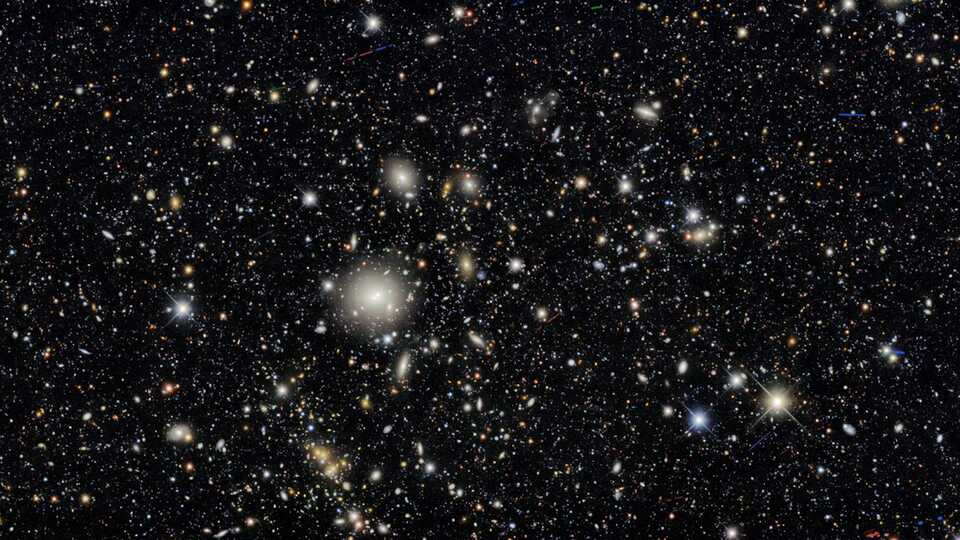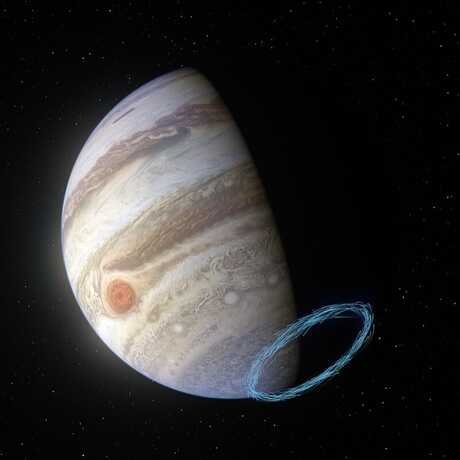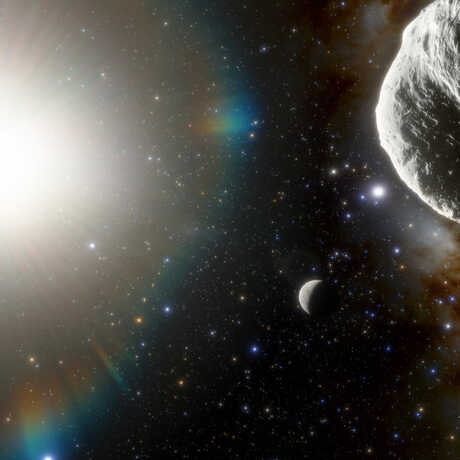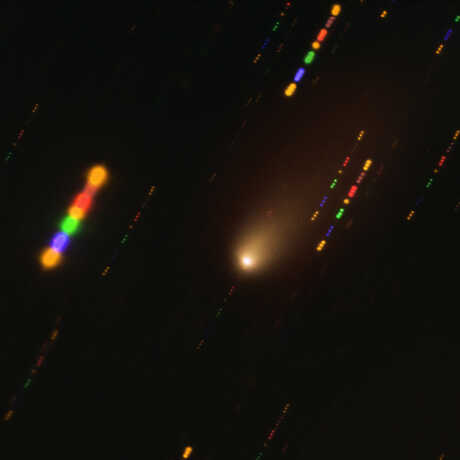Universe Update
The Dark Energy Survey, Molecules, and Fossil Atmospheres
Welcome back to Chilean Observations, our regular peek into new scientific discoveries from the many telescopes operating in the mountains of Chile. Chile is at the heart of modern astronomy and we explore this deeply in our production, Big Astronomy: People, Places, Discoveries, now playing at Morrison Planetarium and other planetariums around the world. Today, we’ll dive into headlines from two of the observatories featured in the show, Cerro Tololo Inter-American Observatory (CTIO) and the Atacama Large Millimeter/submillimeter Array (ALMA), in addition to theVery Large Telescope (VLT).
The main role of the 570-megapixel Dark Energy Camera (DECam) at CTIO–one of the most powerful digital cameras in the world–is the the Dark Energy Survey, a multiyear collaboration of over 400 scientists around the globe to create precise maps of the distribution of galaxies in the Universe. Last month, 29 new papers were published using the first three years of data from the survey, which began in 2013.
Why is galaxy distribution important? It sheds light on dark matter, which makes up 25 percent of our universe. On the largest scale, galaxies aren’t distributed randomly throughout space but instead form a weblike structure, due to the gravitational influence of dark matter. Galaxy clustering measured by DECam reveals regions with a higher density of dark matter. And since the Dark Energy Camera studies nearby galaxies as well as those billions of light-years away, its maps provide both a snapshot of the current large-scale structure of the Universe and a view of how that structure has evolved over the past 7 billion years. The papers, a video, and more information from the survey are available here.
From ALMA, in a presentation earlier this month at the 238th Meeting of the American Astronomical Society (AAS) titled “Molecules in Strange Places,” Dr. Lucy Ziurys of the University of Arizona reported observations of organic molecules in planetary nebulae. Planetary nebulae are bright objects produced when stars of a certain type reach the end of their evolution. Most stars in our galaxy, including the Sun, are expected to end their lives this way. As the dying star sheds large amounts of its mass into space and becomes a white dwarf, it usually emits strong ultraviolet radiation. This radiation was long thought to break up any molecules hurled into the interstellar medium from the dying star and reduce them to atoms. But that’s not the case, according to Ziurys’s findings. Leftover molecules from planetary nebulae serve as critical sources that seed the interstellar medium with molecules, becoming the raw ingredients in the formation of new stars and planets. “It was thought that molecular clouds which would give rise to new stellar systems would have to start from scratch and form these molecules from atoms,” says Ziurys. “But if the process starts with molecules instead, it could dramatically accelerate chemical evolution in nascent star systems.”
Finally, two studies published last month describe the presence of two heavy metals–iron and nickel–in the atmospheres of comets discovered in spectroscopy data from the VLT. Astronomers know that heavy metals exist in comets’ dusty and rocky interiors. But because solid metals don’t usually “sublimate” (become gaseous) at low temperatures, they didn’t expect to find them in the atmospheres of cold comets that travel far from the Sun. Nickel and iron vapors have now been detected in comets observed at more than 480 million kilometers (or 300 million miles) from the Sun, more than three times the Earth-Sun distance! This new result has implications for our understanding of the early Solar System. “Comets formed around 4.6 billion years ago, in the very young Solar System, and haven’t changed since that time. In that sense, they’re like fossils for astronomers,” says study co-author Dr. Emmanuel Jehin, from the University of Liège. The second study also found nickel in the atmosphere of the interstellar comet 2I/Borisov. “At first we had a hard time believing that atomic nickel could really be present in 2I/Borisov that far from the Sun. It took numerous tests and checks before we could finally convince ourselves,” says author Dr. Piotr Guzik from Jagiellonian University. The two studies show that 2I/Borisov and Solar System comets have even more in common than previously thought. Who knows what these fossils might reveal next?




